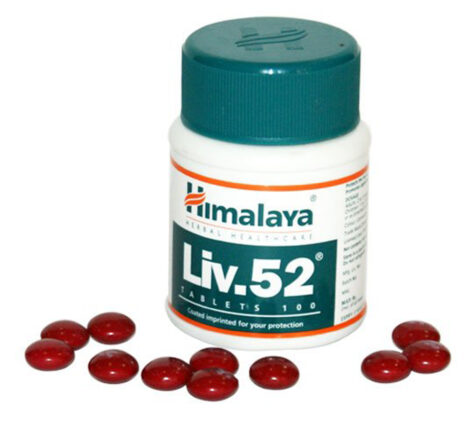The Concept of Traditional knowledge and patent issues
INTRODUCTION
The traditional knowledge of Indian products is more valuable than products in several other countries. this can be thanks to the very fact that India is that the place where lots and plenty of valuable resources are found and most of the products are an outcome of a historic cognitive content. The knowledge of several products in India should be protected against being misuse by other countries, and to induce safeguarded against this. In fact, India needs more updates within the field of patents. The indigenous products and indigenous culture of manufacturing certain products of India should be documented in such a manner that they’re not infringed by the other countries. Thus, to safeguard our indigenous lore from bio-piracy, there’s an excellent need for a rigid legislative agenda during this regard.
The traditional knowledge is to be safeguarded, because the knowledge of practice and also the skills which are developed or sustained are passed from generation to generation within a community which often forms an element of its cultural or spiritual identity.
The Indian Patent Act Protects the rights of indigenous people by safeguarding traditional knowledge.
Throughout the recent years there are certain issues in documentation of indigenous products and therefore the traditional knowledge of Indian products is being patented in other countries thereby resulting in bio-piracy.
TRADITIONAL KNOWLEDGE
A traditional knowledge (TK) could be a piece of information that is gathered by accumulation of expertise in an area, tested and tried over a significant amount of time in a specific place or community and therefore, the folks of that place are well-accustomed to that culture, whereby they might not conceive to maximize their financial gain.
A report by World Health Organization says that eighty percent of the World’s population is counting on the standard data on traditional medical strategies for curing illness.
Some examples of TK are—
– In South Asian countries, the anti-fatigue agent given by a plant referred to as “Jeevani” could be a TK acknowledged amongst the “Kani Tribes”.
– A number of communities use “arogyapaacha” for medical purposes.
– There exists an ulcer treating medication in Thai ancient healing, now being used by several members of the community.
– The Western Amazon tribes prepare numerous medicines by employing a plant referred to as “vascular plant”.
In layman’s language, it can be understood as knowledge that has been gathered or accumulated by a community through years of expertise, it’s usually tried and tested over long amount of time.
TKs are custom-made to native culture and atmosphere and is deep embedded in each community across the world. A data system is essential to protect and conserve the same. It is to be borne in mind that TK is collective data of the entire community and one individual cannot claim over it.
Examples can be taken of the health care systems. World Health Organization (WHO) has declared that eighty percent of the world’s population depends on ancient medication for its primary health care and the TK is indispensable for its survival.
The standard usage of ‘neem and turmeric’ in first-aid, curing rashes, and its cosmetics is the most common. TK in an exceedingly general sense embraces the content of information as ancient cultural expressions, and distinctive signs and symbols related to TK. TK refers to data ensuing from intellectual activity in an exceedingly ancient context, and includes power, practices, skills, and innovations. The content is found in an exceedingly large choice of contexts, including: agricultural, scientific, technical, ecological and healthful data additionally as biodiversity-related data.
WIPO CONVENTION ON TRADITIONAL KNOWLEDGE
Chapter 2 of WIPO convention deals with traditional knowledge when dealing with traditional cultural expressions which is said as TCE’s or ‘expressions of folklore’. As per the WIPO, a Traditional Cultural Expression (TCE) is considered as knowledge such as traditional medical use of a plant or a traditional ecological management practices, but they are different from the expression or representation of our traditional cultures such as traditional song or any other graphic design.
As per the WIPO convention report, the Traditional knowledge holders say that there is a holistic relationship between their traditional knowledge and genetic resources, forming a part of the indigenous environment and TCE or the expression of the folklore, which is the reflection of their cultural identity.
A committee was set by the WIPO in year 2001 for addressing the issues regarding traditional knowledge and folklore in a comprehensive manner and that committee was called as Intergovernmental Committee on Intellectual Property and Genetic Resources and ultimately it considers to protect bot the traditional knowledge and TCEs together with regard to the aspect of intellectual property of genetic resources.
PROTECTION FOR TRADITIONAL KNOWLEDGE AND INTELLECTUAL PROPERTY LAW
When analyzing about the nature of protection of traditional knowledge under intellectual property then the first and foremost step is to identify under which category of the Intellectual Property does the traditional knowledge fall in.
The categories of intellectual property under which these traditional knowledge’s can be protected are divided into Copyright Law, Patent and the Trade Secrets.
PROTECTION OF TK UNDER INDIAN COPYRIGHT LAW
The Indian Copyright Law though protects the unpublished Indian works under Section 31A of Indian Copyright Act, it does not extend its branches to protect directly the traditional knowledge of indigenous people or the expression of the folklore.
But there are certain problems in protecting the traditional knowledge. The main drawbacks are:
· Authorship: The Indian Copyright Act protects the author of the work but in protection of traditional knowledge there is no single author for granting protection to the author. In the case of traditional knowledge, the work is an accumulation of knowledge from generation to generation and by this tracing the authorship is difficult and also impossible.
· Protection for only a limited period of time: The Indian Copyright law protects the work registered under this for a fixed period of time which is only for a period of 60 years. But in case of traditional knowledge, it should have a perpetual protection and not a limited period of time protection.
· Fixed form: Protecting the copyright under the Indian Copyright Law only a tangible form of work can be registered. But in case of traditional knowledge, it is never a fixed form of work but it is only a verbal form of knowledge that passed on from generation to generation. In some cases, however, the stories can be found in written form.
Thus, the traditional knowledge cannot be registered under Indian Copyright law and easily denied for being registered because the traditional knowledge fails to satisfy the basic requirements of Indian Copyright Act.
PROTECTION OF TK UNDER INDIAN PATENT LAW
The Indian Patent law in India is granted to any individual for his invention with a novelty. In this regard, the traditional knowledge does not have an inventiveness or novelty as it consists of information given to present generations by the preceding generations. Further, there is no single person who can claim the patent of a traditional knowledge because it is a knowledge of a particular community people on the whole. Therefore, the traditional knowledge cannot be protected under the Indian Patent Act.
From the abovementioned, it is clear that the traditional knowledge will not be approved for registration under Indian Patent Act.
PROTECTION OF TK UNDER INDIAN TRADE SECRETS ACT
The protection of traditional knowledge under trade secrets act is quiet possible for indigenous people because it does not constitute a costly procedure, as involved in Patent Act. The traditional knowledge is a secret within particular community people and they are always conscious about protecting their knowledge from generation to generation and by this, a traditional knowledge can be protected under Indian Trade Secrets Act.
Though Indian traditional knowledge is quiet rich which is used in various different fields like agriculture sector, medical sectors etc., the Indian intellectual property laws fail to effectively protect the traditional knowledge.
However, there are certain other ways like sui generis legislations for protecting the traditional knowledge.
Misappropriation of TK in Turmeric Case
– Use of turmeric in India: Turmeric is a tropical herb and used widely in India as a cosmetic agent and also used mostly in all dishes in India as a coloring agent. The turmeric powder has a deep yellow color and a slight bitter taste when raw.
– Patent issue and Turmeric: In the year 1995, US Patent was awarded to Medical Centre Of University of Mississippi for the use of wound healing property of turmeric.
– India’s claim: Dr. R.A.Mashelkar who was the Director of Council of Scientific and Industrial research (CSIR) during period of 1995 to 2006 opposed the patent granted to the Medical Centre of Mississippi university and worked hard for awakening India’s traditional knowledge of Turmeric.
– Arguments by Indian scientists: The claim was supported by documentary evidence which was an old newspaper dated 1953 printed and published by Indian Medical Association, and there were also evidences produced which includes old and ancient texts in Sanskrit.
– Judgement: In 1998 April, the judgement favored CSIR which was based on the argument that was proved with string documentary evidence that Turmeric was being in use by Indian people since ancient period of time.
Misappropriation of TK in Neem Case
– Neem: The Neem tree is a native evergreen species of tropical countries like India and other such South-eastern countries. Neem is called as “the village pharmacy” in India for its healing property and it is used in medicine (mostly in Ayurveda) from the very beginning, Neem is called as “Arista”, a Sanskrit word which means imperishable. Not only the Neem leaves are used in medicine but the tree itself is used in medicine. It is used as inti-inflammatory, anti-pyretic, antiseptic, anti-fungal, antiviral medicines.
– Bio-piracy: The term bio-piracy means the theft of several genetic resources and materials mainly the plant varieties in the form of obtaining patent. Once a material is patented, the owner could possibly prevent that thing form being recovered by any other person. Thus, by patenting the traditional knowledge of indigenous people the corporate can restrict people from using their own traditional knowledge thereby affecting the livelihood of native people.
– Problem raised in Neem Patent: In the year 1971, a timber importer form US imported neem seeds to plant neem trees in his headquarters in Wisconsin. He also conducted performance and safety tests upon the pesticide properties of neem and got clearance from the US Environmental Protection Agency known as EPA. After three years he sold the patent to a multinational corporate company which is known as W R Grace and Co. and by the year 1985, several US and Japanese corporations were trying to find and formulation of emulsions for toothpaste production of Neem. Subsequently in the year 1992, W R Grace and co claimed rights for the pesticide emulsion begotten out of Neem seeds. And by this, it began to sue Indian companies for making such emulsions.
– Dispute: According to India’s claim, it was stated that Neem is an indigenous product and it is still in practice as a form of traditional knowledge in India. It was also said that Neem if granted patent it would affect the poor farmers and by this the Indian economy will also be harmed. – Neem campaign in India: A group of individuals and several NGO‟s initiated their Neem campaign and this was done to mobilize the worldwide people for support and to protect the traditional knowledge systems and also protect Indian traditional products from bio-piracy. The Neem Case was the first initiative to challenge US and European patents with regard to bio-piracy.
– Case judgement: On July 30,1997 the European Patent Office (EPO) accepted the arguments of Indian scientists thus this resulted in rejection of patent granted by the US patent office to W R Grace and co.
The argument which was accepted on whole was the use of Neem and its products in India for a period of more than 4000 years.
CONCLUSION
Traditional knowledge is something that ought to be protected as a valuable asset because it is that the basic style of indigenous and native communities. Traditional knowledge also supports Indian economy since most of the tested TKs are used for production of certain novel products having commercial value. Though this knowledge, the agriculturalists conserve and maintain the biodiversity and make sustainable agricultural practices.
The documentation of content prevents the possibilities of bio-piracy whereby the native lore is prevented against misuse and misappropriation of products by third parties. Thus, there is a need to update the Traditional Knowledge Digital Library (TKDL) periodically and headquarters should be maintained by a committee, either by the Central or the State government. The standard knowledge of all indigenous products and ideas out of these products should even be a put in the TKDL. India as a developing country while concentrating in development should also concentrate in protecting the inborn knowledge of country furthermore.




